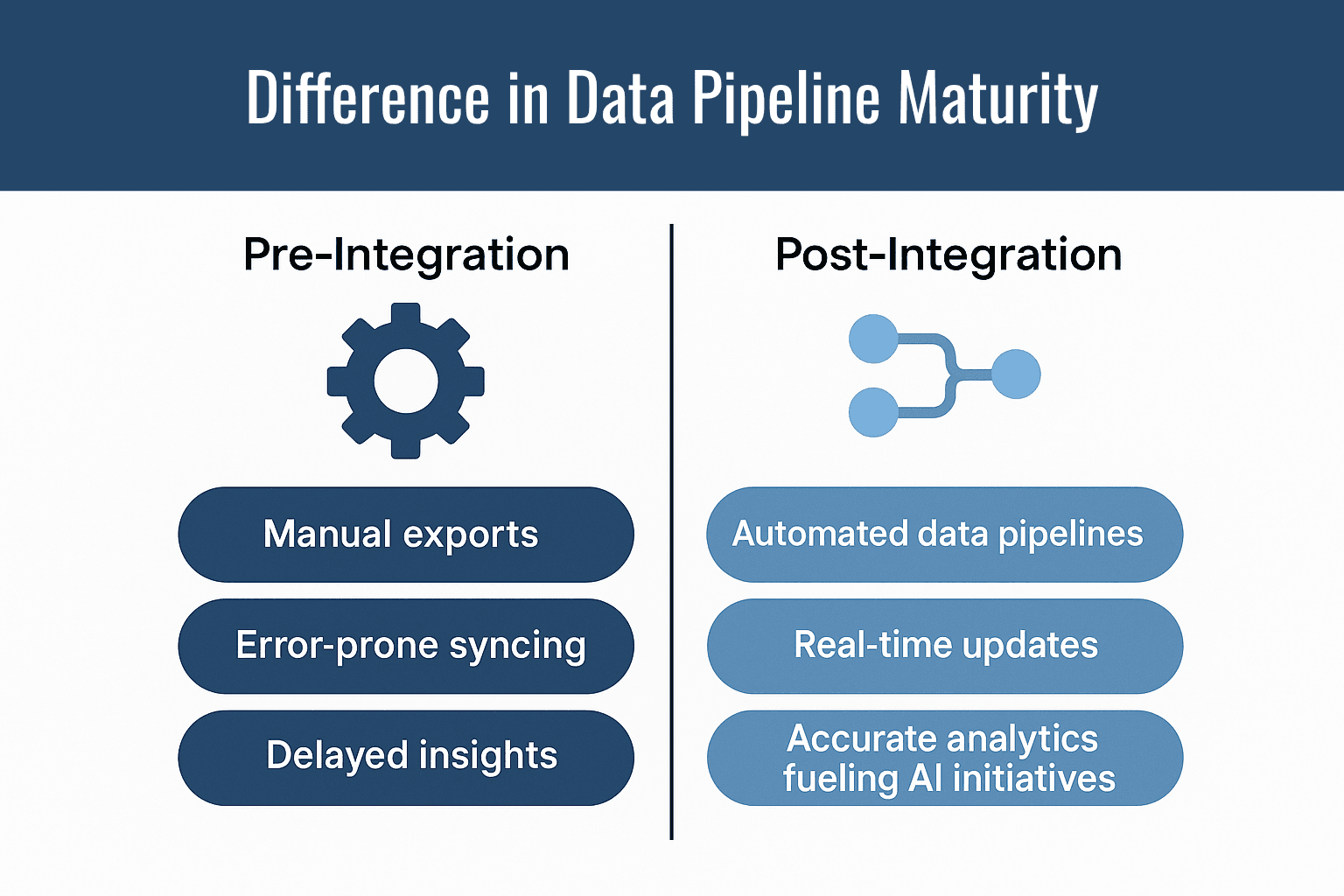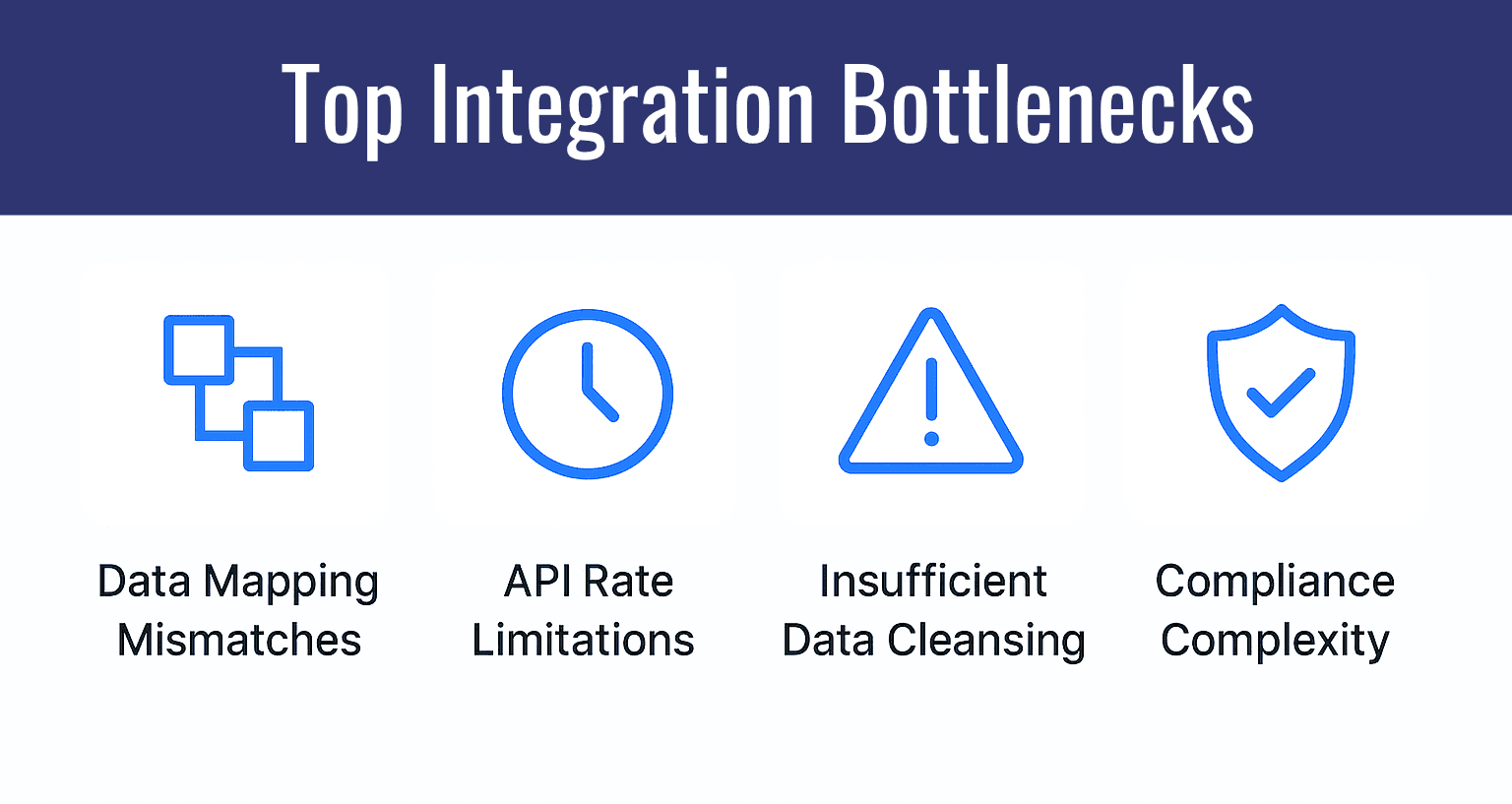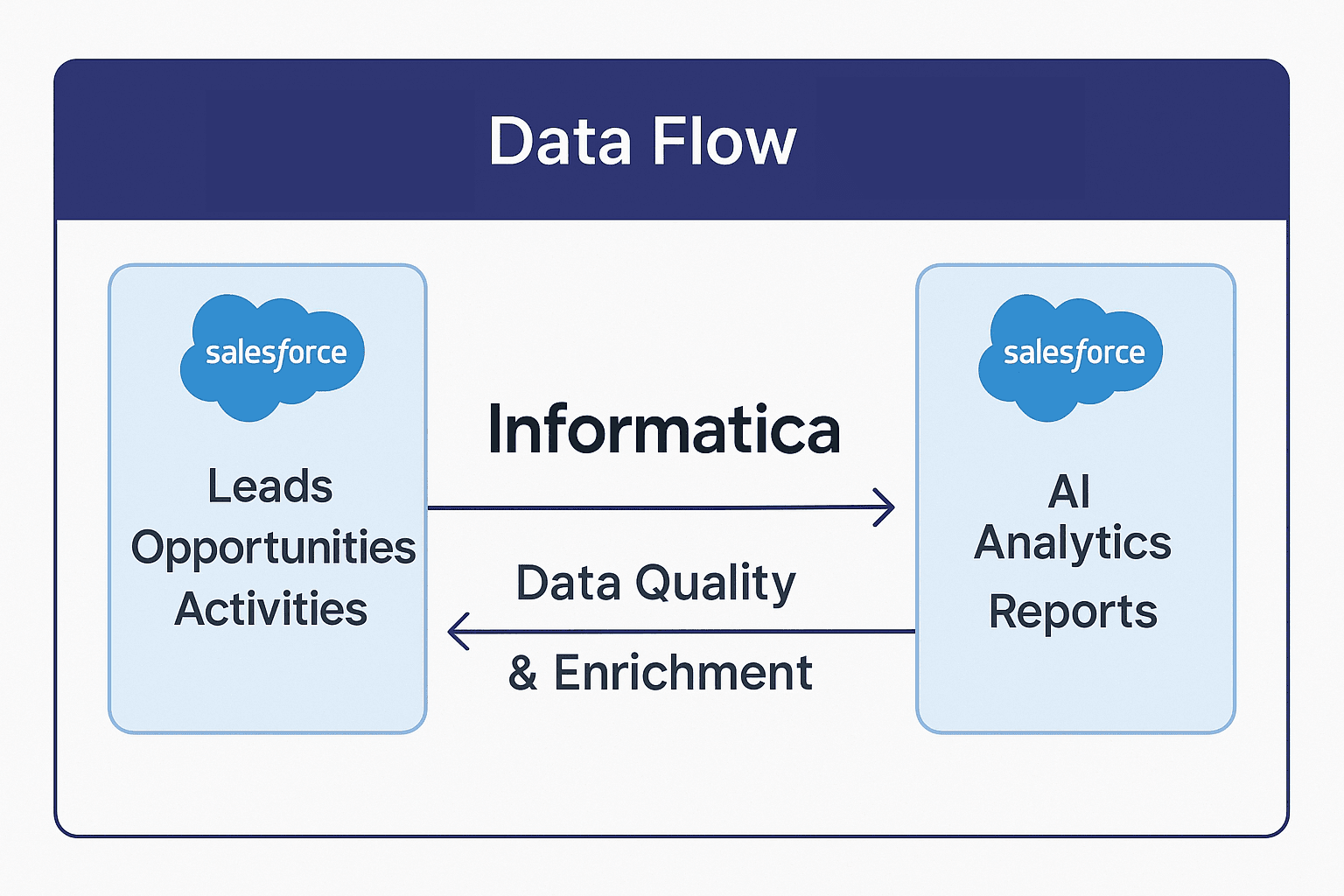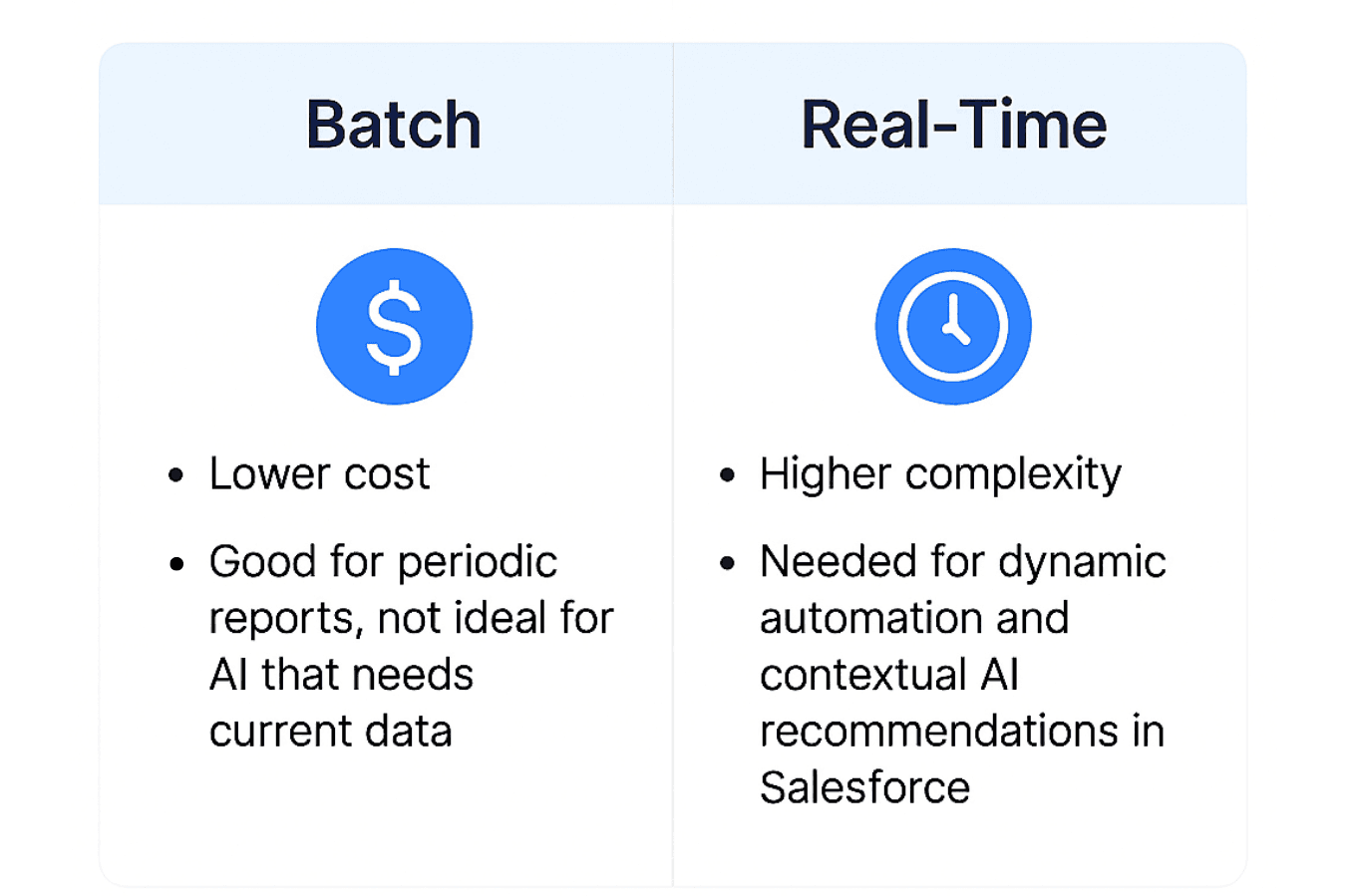Integrating Salesforce and Informatica: Best Practices for AI-Driven Data Management in 2025
July 14
CRM Configuration
Blog

Enterprise organizations in 2025 face a rapidly evolving data landscape. With the volume, variety, and velocity of business data increasing, the challenge isn’t just collecting or storing data—it’s transforming information into actionable insights using artificial intelligence (AI). The seamless integration of Salesforce and Informatica has emerged as a critical success factor for companies seeking to supercharge data management and power smarter decision-making through AI-driven strategies.
Why Integrate Salesforce and Informatica for AI-Driven Data Management?
CRM administrators, IT decision-makers, and digital transformation leaders know that disconnected data silos undermine the promise of both Salesforce and Informatica. As AI takes center stage, integration is no longer a back-office concern; it’s foundational to business intelligence and customer experience.
- Unified View of the Customer: Integrating Salesforce’s rich CRM data with Informatica’s robust data integration and quality tools eliminates silos and enables holistic customer insights.
- AI-Ready Data Pipelines: Informatica can automate, cleanse, and enrich Salesforce data, ensuring clean, reliable input for AI models and analytics within Sales Cloud, Service Cloud, or Einstein AI features.

Key Challenges: The 2025 Landscape
Organizations are eager to unify Salesforce and Informatica, yet several hurdles often stall progress:
- Complex Data Structures: Salesforce’s custom object model and Informatica’s enterprise ETL capabilities can be difficult to harmonize.
- Data Quality Issues: Inconsistent, duplicated, or incomplete customer data hinders AI accuracy and customer insights.
- Integration Latency: Batch data movement can undermine real-time decisioning—a key requirement for AI-driven personalization and automation.
- Governance and Security: Sensitive or regulated industries must protect data across platforms and workflows.

Best Practices: Integrating Salesforce and Informatica for AI-Driven Success
Based on our two decades of CRM integration experience at OMI, here’s what we know truly works in 2025:
1. Start with Clarity: Define Data Goals and Use Cases
- Identify business outcomes: AI-powered forecasting? Enhanced personalization? Cross-sell targeting?
- Map which Salesforce objects and Informatica data domains are needed and why.
- Document data owners, SLAs, and change management protocols early to avoid confusion downstream.
2. Harmonize Data Models and Metadata
- Establish a unified data taxonomy for fields, picklists, and custom objects across platforms.
- Leverage Informatica’s metadata management features to standardize mappings and transformations before synchronization.
- Where possible, use APIs and connectors certified for Salesforce to avoid brittle, unsupported integrations.

3. Put Data Quality at the Core
- Normalize, deduplicate, and enrich new and existing CRM records before loading them into Salesforce.
- Establish feedback loops so that data issues in Salesforce are flagged and corrected in Informatica and vice versa.
- Automate data quality dashboards to monitor accuracy, completeness, and freshness—critical for AI model performance.
4. Enable Real-Time or Near-Real-Time Sync When Possible
- AI algorithms and operational dashboards excel when data isn’t stale. Use event-driven or streaming integration patterns where business value demands timeliness.
- For less urgent workloads, batch processing may still be appropriate—but document the cadence and business impact.
5. Secure and Govern Data End-to-End
- Monitor and audit data movement, ensuring compliance with regulations like GDPR and CCPA.
- Apply role-based access controls and field-level security across both environments.
- Document consent and data retention practices as part of your integration blueprint.
6. Operationalize AI: Feed Clean Data into Analytics and Automation
- Connect curated data sets from Informatica directly into Salesforce Einstein Analytics or other AI/ML platforms.
- Use these insights to drive automated lead scoring, personalized journeys, or predictive service resolutions within your CRM workflows.
- Measure and iterate: Analyze business outcomes and retrain models as data sources and market conditions evolve.

Connecting Strategy to Execution: Steps to Implementation
- Assessment & Planning: Perform a technical and business needs analysis (object mapping, data volumes, user stories).
- Pilot Integration: Start with a high-impact Salesforce object (e.g., Opportunities or Accounts) and test data exchange via Informatica.
- Iterative Rollout: Scale integration incrementally, layering in data quality and AI-driven reporting as you gain confidence and feedback.
- Change Management: Train CRM users and analytics teams on new workflows, dashboards, and data health practices.
- Monitor & Optimize: Set up automated monitoring and continually refine interfaces, AI models, and business logic for true digital transformation.
Building the Case: Industry Direction and Insights
The convergence of CRM and AI-powered data integration isn’t just a trend—it’s fast becoming a competitive necessity. As noted by sources such as MIT Sloan Management Review and McKinsey, organizations that invest in unified, intelligent data architectures accelerate not only productivity, but also growth through superior customer engagement.
Conclusion: From Data Chaos to AI Clarity
At OMI, our experience guiding clients across industries has shown that integrating Salesforce with Informatica isn’t just about technology. It’s about activating the full power of your business data—ensuring it’s trusted, timely, and ready to fuel AI-driven decisions now and into the future. Contact us to explore how our managed services and Salesforce integration expertise can help your organization unlock new opportunities, future-proof your CRM, and deliver customer experiences that set you apart.
Ready to learn more about effective CRM transformation and data integration best practices? Connect with the OMI team for expert guidance and discover how leading organizations are navigating the next wave of AI-driven business value.